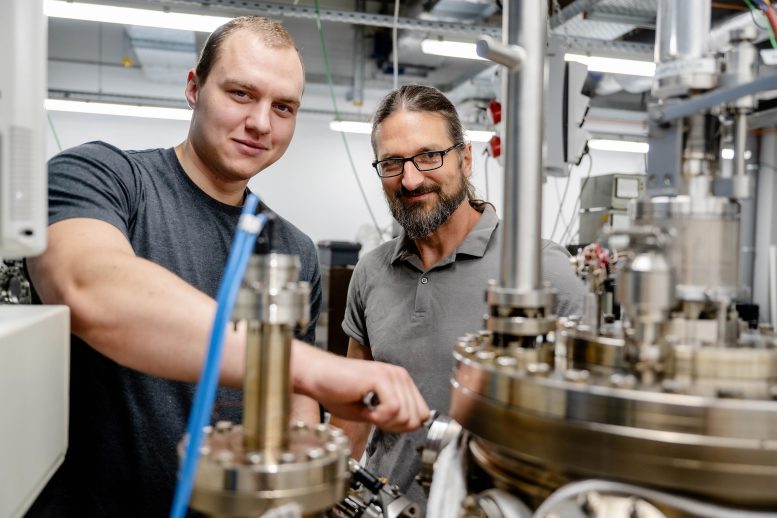
A German-Chinese research team has successfully created a quantum superposition state in a semiconductor nanostructure, marking a significant breakthrough for quantum computing. Achieved through the use of two specifically calibrated short-wavelength optical laser pulses, the team was able to generate a quantum bit, or qubit, in a semiconductor nanostructure.
A German-Chinese research team has successfully created a quantum bit in a semiconductor nanostructure. Using a special energy transition, the researchers created a superposition state in a quantum dot – a tiny area of the semiconductor – in which an electron hole simultaneously possessed two different energy levels. Such superposition states are fundamental for quantum computing.
Previously, the induction of such a state necessitated a large-scale, free-electron laser capable of emitting light in the terahertz range. Unfortunately, this wavelength was too long to accurately focus the beam on the quantum dot. This team, however, achieved the excitation with two carefully calibrated, short-wavelength optical laser pulses.
The team headed by Feng Liu from Zhejiang University in Hangzhou, together with a group led by Dr. Arne Ludwig from Ruhr University Bochum and other researchers from China and the UK, report their findings in the journal Nature Nanotechnology, published online on July 24, 2023.

Harnessing the Radiative Auger Process
To achieve this superposition state, the researchers utilized the radiative Auger transition. In this process, an electron recombines with a hole, partially releasing its energy as a photon and partially transferring it to another electron. The same process can be witnessed with electron holes – in other words, missing electrons. In 2021, a team of researchers succeeded for the first time in specifically stimulating the radiative Auger transition in a semiconductor.
In the current project, the researchers showed that the radiative Auger process can be coherently driven: they used two different laser beams with intensities in a specific ratio to each other. With the first laser, they excited an electron-hole pair in the quantum dot to create a quasiparticle consisting of two holes and an electron. With a second laser, they triggered the radiative Auger process to elevate one hole to a series of higher energy states.
Creation of Quantum Superposition
The researchers used finely tuned laser pulses to create a superposition between the hole ground state and the higher energy state. The hole thus existed in both states simultaneously. Such superpositions are the basis for quantum bits, which, unlike conventional bits, exist not only in the states “0” and “1,” but also in superpositions of both.
Hans-Georg Babin produced the high-purity semiconductor samples for the experiment at Ruhr University Bochum under the supervision of Dr. Arne Ludwig at the Chair for Applied Solid State Physics headed by Professor Andreas Wieck. In the process, the researchers increased the ensemble homogeneity of the quantum dots and ensured the high purity of the structures produced. These measures facilitated the performance of the experiments by the Chinese partners working with Jun-Yong Yan and Feng Liu.
Reference: “Coherent control of a high-orbital hole in a semiconductor quantum dot” by Jun-Yong Yan, Chen Chen, Xiao-Dong Zhang, Yu-Tong Wang, Hans-Georg Babin, Andreas D. Wieck, Arne Ludwig, Yun Meng, Xiaolong Hu, Huali Duan, Wenchao Chen, Wei Fang, Moritz Cygorek, Xing Lin, Da-Wei Wang, Chao-Yuan Jin and Feng Liu, 24 July 2023, Nature Nanotechnology.
DOI: 10.1038/s41565-023-01442-y
The research was funded by the National Natural Science Foundation of China (funding codes 62075194, 61975177, U21A6006, U20A20164, 62122067), the Fundamental Research Funds for the Central Universities (2021QNA5006), the Federal Ministry of Education and Research (16KISQ009) and the German Research Foundation (DFH/UFA CDFA-05-06).
Never miss a breakthrough: Join the SciTechDaily newsletter.
Follow us on Google and Google News.
1 Comment
Just for your interest. A superposition of two states, does not mean that it in both states. It is not in state 1, not in state 2, not in both, and not in neither. This is not logical in the macroscopic world, but is key to how things works at the quantum scale.